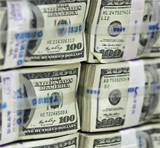By David John Marotta
Forbes
 The U.S. Treasury never wanted to surrender control of its currency to a quasi-private agency. But after enduring a recent financial shock and subsequent bank run in 1907, Congress wasn’t careful enough when creating our central bank, the Federal Reserve. Today our currency is called “Federal Reserve Notes.” Its namesake, although openly admitting it is a not a federal agency, has near-complete control of our money.
The U.S. Treasury never wanted to surrender control of its currency to a quasi-private agency. But after enduring a recent financial shock and subsequent bank run in 1907, Congress wasn’t careful enough when creating our central bank, the Federal Reserve. Today our currency is called “Federal Reserve Notes.” Its namesake, although openly admitting it is a not a federal agency, has near-complete control of our money.
In 1913 when the Fed was founded, its principal function was to make sure the U.S. banking system could endure bank runs created by unforeseen financial shocks. The agency was to accomplish this task by loaning to its member banks when the banks needed more liquidity. These loans were to be paid in Federal Reserve Notes, a new banknote that the Fed was given the legal authority to issue.
However, as economist Milton Friedman and coauthor Anna Schwartz explain in “A Monetary History of the United States,” just over a decade after its creation, the Fed actually created the panic it was founded to stop. Their policies, Friedman and Schwartz argue, spiraled what could have been an ordinary recession into the Great Depression.
